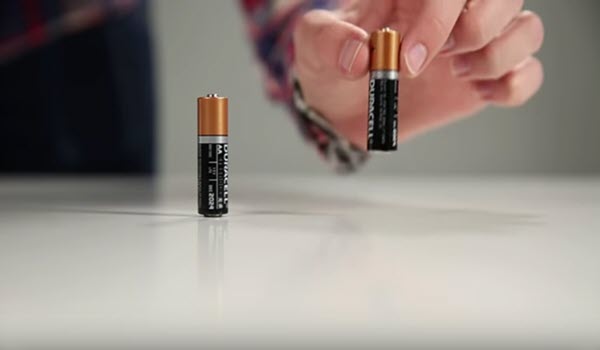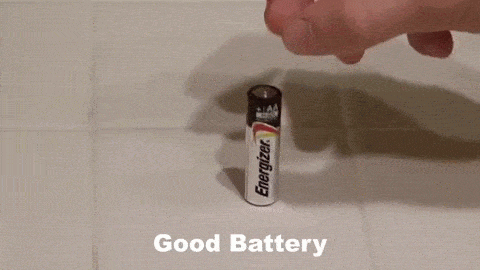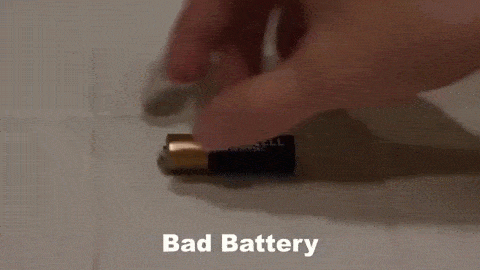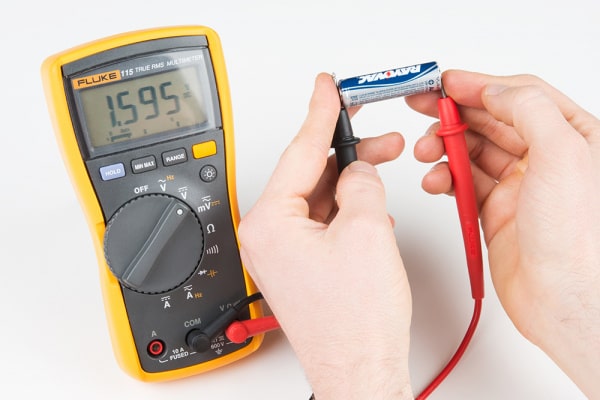- Often, we find a lot of random dry cell batteries lying around the house.
- Worse, we can’t tell just by looking at them whether or not they are new batteries or used-up ones.
- This brilliant hack makes it very simple to test those batteries before discarding them.
Is Your Dry Cell Battery Dead or Alive? Learn How to Check in 2023
The Drop Test Method

1. Rest the dry cell batteries upright on a hard surface (preferably on the floor).
2. Pick the batteries with your two fingers (not too far off the floor, just 1 or 2-inches height) and then gently drop them.
3. Good Battery – A good battery will make a solid thump sound on hitting the floor and will stay upright.

4. Bad Battery – A dead or mostly used up battery will bounce off the floor and fall.

Remember – A battery that has a bit of life left in it also bounces off. Probably, you can still use it for a good few days to run your wall clock.
Also, this method only works for alkaline batteries. That is most of your non-rechargeable batteries.
This test is so damn simple! Seriously, who knew that all it took was gravity?
The Multimeter Method

A Multimeter is an electronic measuring instrument that combines several measurement functions in it. A typical Multimeter can measure voltage, current, and resistance.
You can easily buy one from your nearest electronics store or online.
A Multimeter is also the most reliable way to test a battery. It is much more versatile and can work with non-alkaline batteries and different battery types (such as the 9-volt, C, and D models).
1. Turn on the digital Multimeter and turn the knob to V, as seen in the image above.
In some Multimeter, you will have to turn the knob to 20 in the DCV. We turn it to 20 because we are testing battery voltage levels that are not greater than 20V dc.
2. Put the red probe of the Multimeter to the dry cell battery’s positive terminal, and the black probe to the battery’s negative terminal, as seen in the image above. The positive and negative signs are usually mentioned on the battery. For AA, AAA, C, and D batteries, the positive terminal is the protruding end.
3. Now check the reading on the Multimeter. For AA, AAA, C, and D alkaline batteries, the voltage should ideally be in the range of 0.90V to 1.5V.
| Usability | Voltage Levels (V) |
| New/Unused | 1.50 |
| Good | 1.35 – 1.49 |
| Average | 1.20 – 1.34 |
| Low | 0.90 – 1.19 |
| Discard | < 0.90 |
For the AA and AAA rechargeable Nickel-Metal Hydride batteries, the voltage should ideally be in the range of 0.90V to 1.2V.
Why The Batteries Bounce?
This hack is no fiction but pure science.
In a good battery, the electrolyte present inside is wet and gel-like. So, when a good battery hits the surface, the gel that is in a semi-liquid form absorbs all the energy. This makes the battery stand upright and not fall.
But as the battery gets used up, chemical reactions occur, and the gel-like electrolyte gets solidified. So, when a bad or used-up battery hits the surface, the hardened electrolyte inside the battery makes it bounce and topple over.
You can learn more regarding this experiment in the Journal published by the researchers at Princeton University, where they explain in detail about the bouncing battery theory.
Save A Few Bucks!
An average family easily has tens of batteries operating in various devices around the house.
And this simple battery power checking trick is definitely brilliant!
In the future, never discard dry cell batteries without doing this 3-second test.
Now that you will save some bucks, buy yourself something more useful!
Got all that? Great!
Author: Nik is an author with over 14 years of expertise in software and tech. Holding an Engineering degree in Information Technology and a Master's degree in Data Science from Liverpool University, he is adept at dissecting and discussing the nuances of technology with clarity and precision. Disclaimer: The content on this website is originally created by human authors and is refined using AI tools solely to ensure grammar, flow and clarity.
